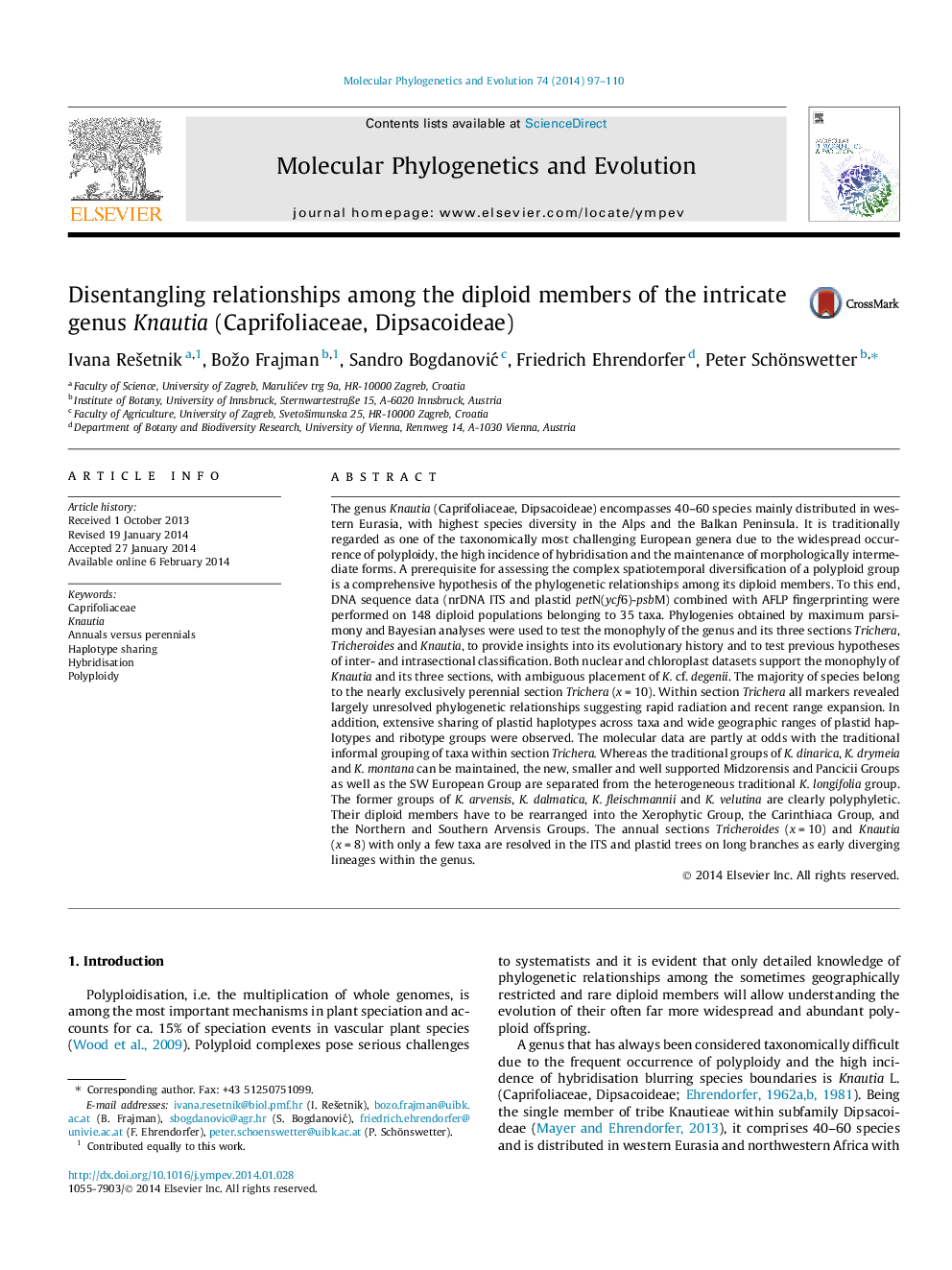| کد مقاله | کد نشریه | سال انتشار | مقاله انگلیسی | نسخه تمام متن |
|---|---|---|---|---|
| 2833851 | 1570821 | 2014 | 14 صفحه PDF | دانلود رایگان |

• The genus Knautia is monophyletic as is the species-rich section Trichera.
• Phylogenetic relationships within section Trichera are partly unresolved.
• Plastid haplotypes are extensively shared across taxa and often very widespread.
• The traditional grouping of taxa is only partly supported.
The genus Knautia (Caprifoliaceae, Dipsacoideae) encompasses 40–60 species mainly distributed in western Eurasia, with highest species diversity in the Alps and the Balkan Peninsula. It is traditionally regarded as one of the taxonomically most challenging European genera due to the widespread occurrence of polyploidy, the high incidence of hybridisation and the maintenance of morphologically intermediate forms. A prerequisite for assessing the complex spatiotemporal diversification of a polyploid group is a comprehensive hypothesis of the phylogenetic relationships among its diploid members. To this end, DNA sequence data (nrDNA ITS and plastid petN(ycf6)-psbM) combined with AFLP fingerprinting were performed on 148 diploid populations belonging to 35 taxa. Phylogenies obtained by maximum parsimony and Bayesian analyses were used to test the monophyly of the genus and its three sections Trichera, Tricheroides and Knautia, to provide insights into its evolutionary history and to test previous hypotheses of inter- and intrasectional classification. Both nuclear and chloroplast datasets support the monophyly of Knautia and its three sections, with ambiguous placement of K. cf. degenii. The majority of species belong to the nearly exclusively perennial section Trichera (x = 10). Within section Trichera all markers revealed largely unresolved phylogenetic relationships suggesting rapid radiation and recent range expansion. In addition, extensive sharing of plastid haplotypes across taxa and wide geographic ranges of plastid haplotypes and ribotype groups were observed. The molecular data are partly at odds with the traditional informal grouping of taxa within section Trichera. Whereas the traditional groups of K. dinarica, K. drymeia and K. montana can be maintained, the new, smaller and well supported Midzorensis and Pancicii Groups as well as the SW European Group are separated from the heterogeneous traditional K. longifolia group. The former groups of K. arvensis, K. dalmatica, K. fleischmannii and K. velutina are clearly polyphyletic. Their diploid members have to be rearranged into the Xerophytic Group, the Carinthiaca Group, and the Northern and Southern Arvensis Groups. The annual sections Tricheroides (x = 10) and Knautia (x = 8) with only a few taxa are resolved in the ITS and plastid trees on long branches as early diverging lineages within the genus.
Figure optionsDownload as PowerPoint slide
Journal: Molecular Phylogenetics and Evolution - Volume 74, May 2014, Pages 97–110